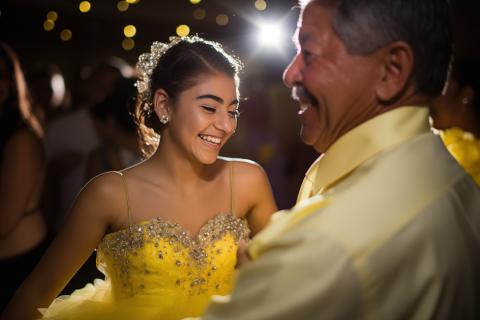In Latin American culture, adolescent girls cross an important threshold when they reach the age of 15. The arrival of their 15th birthday means they’re ready to make the transition from childhood to womanhood, a significant life change that has social, cultural, and biological implications. This is a time for celebration and public acknowledgment, and that is what the quinceañera provides.
The word quinceañera is derived from the Spanish words for fifteen (quince) and years (años). One of the most remarkable aspects of the modern quinceañera celebration is its ubiquitousness, not just geographically but through time.
The best evidence suggests this observance has its roots in Latin America’s ancient Mesoamerican culture, specifically in the practices of the Aztecs and the Maya. It was adopted and modified by the Catholic Church in the 16th century—in the early days of the Spanish conquest of Latin America—and has been preserved in a recognizable form in Christian Hispanic culture for the last 500 years.
The quinceañera has spread from its original roots in the lands of Mexico to be celebrated in much, if not all, of Central and South America. Despite an immense passage of time, it has preserved its identity as a profoundly important rite of passage in the modern world.
Read more about the Mesoamerican history of the Quinceañera celebration in our November–December 2024 issue, “Coming of Age in the Ancient World.” Subscribe to Ancient Origins Magazine today!
Featured Image: Representative image of quinceañera party. Rosemarie Mosteller / Adobe Stock




